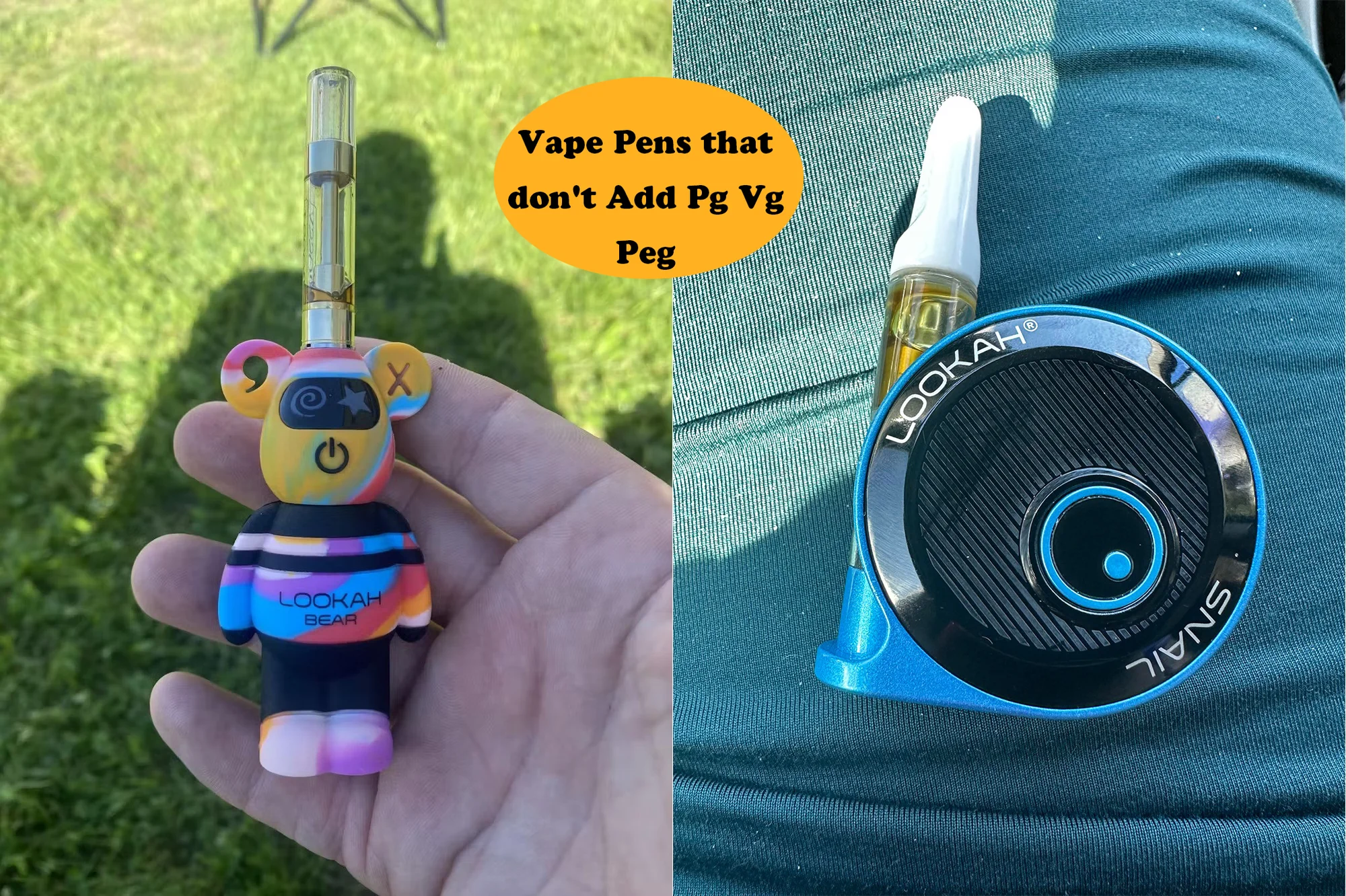Vape Pens that don't add Pg Vg Peg

If you're looking for vape pens that don’t contain PG (propylene glycol), VG (vegetable glycerin), or PEG (polyethylene glycol), you’re likely seeking something more natural or less irritating.
While most vape liquids use PG/VG/PEG as carriers, there are some alternatives—especially in the cannabis or botanical extract world.
Let's take a look.
Vape Pens that Don't add PG VG PEG
As you may or may not know, vape juice has four ingredients, VG, PG (or PEG), nicotine and flavoring. Most flavoring is in a mix of PG and VG.
PEG (polyethylene glycol) is commonly used to thin eliquid, sames as PG, But it is almost no longer used because PEG breaks down to harmful acetaldehyde and formaldehyde when heated at high temperatures and voltages.
Either PG or VG (vegetable glycerin) can be vaped alone, but they’re usually present in some preferred ratio (they mix readily together).
Both PG (propylene glycol) and VG are FDA-approved for food and pharmaceutical uses, but they can affect your experience and safety differently.
PG produces less vapour when heated, but enhances whatever flavouring is added to it. VG is noticeably more viscous and produces more vapour (or “cloud”) when heated.
A lot of people mistakenly think VG or PG is oil. It’s not. They are water-soluble liquids that are clear, colourless, odourless, and taste slightly sweet. Any actual oil you add to them will float to the surface.
Really, PG and VG ARE the cleanest and safest, most neutral carriers, that’s why they are used. I suggest you only consider alternatives if it’s not possible to use PG and VG due to severe allergic reactions.
Apart from PG, VG, and PEG, there are a few other liquids that are generally considered safe for vaping, though they are less common. Here are some alternatives:
Natural Flavorings: Some e-liquids use natural flavors extracted from real food sources - fruit, vegetable or plant, without artificial flavorings or additives, which are unhealthy or dangerous.
However, they are still commonly used PG and VG as a carrier or dilutant. These don’t eliminate the risk of regularly inhaling PG and VG, but they do make the practice somewhat more safe.
MCT Oils: Certain natural oils, such as Coconut Derived MCT oil, is a healthful and neutral-tasting oil that serves as a delivery system for cannabinoids such as THC and CBD.
Other than natural terpenes, MCT still appears to be the safest of commonly used cutting agents as it has not been identified to produce the same toxins or carcinogenic by-products in vaping applications as compared to PEG and PG/VG.
Cannabis oils: Certain cannabis oils have no carrier oils like MCT, just cannabis extract and natural terpenes. They are properly formulated for vaporization and free from these solvents - PG, VG and PEG.
Read the label or lab test (COA) to confirm it contains only cannabinoids and terpenes Live rosin or solventless extract is usually a safe bet
In addition, If you want zero additives, a dry herb vape is the cleanest choice.
A dry herb vaporizer is a smoking device that heats the herbs (cannabis flower and tobacco leaf) in an oven-like heating chamber for them to be vaporized and inhaled.
Their main advantage is that they release the compounds of the dry herb without igniting it, allowing for healthier, more flavorful hits without any smoke or inhalation of plant matter.
Conclusion
Generally, Both PG and VG are a superior medium for flavorings and nicotine. There is still no safer alternatives. You can adjust the ratio of pg and vg according to your own situation.
If you're looking for vape pens that don’t use PG, VG, or PEG as carriers or dilutants, cannabis vape pens are an excellent choice.
Cannabinoids like THC and CBD are fat-soluble, You can use MCT oil or even natural terpenes as a carrier or dilutant.
Look for vape juices that have been tested by independent labs. These tests ensure that the e-liquid doesn’t contain harmful contaminants, toxins, or unwanted chemicals.
